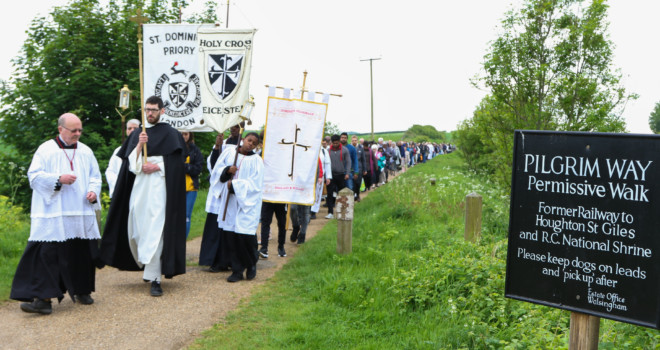
 November is a month of hope for the Christian. In this time, both in the saints and the sinners, we remember those who have gone before us on this earth—those who have now crossed the threshold into eternity. We reflect on their lives, examples, and teachings in order to learn better how to be true followers of Christ. Hope shines greatly this month because in the saints we recognize the battle already won by God’s saving action in them.
November is a month of hope for the Christian. In this time, both in the saints and the sinners, we remember those who have gone before us on this earth—those who have now crossed the threshold into eternity. We reflect on their lives, examples, and teachings in order to learn better how to be true followers of Christ. Hope shines greatly this month because in the saints we recognize the battle already won by God’s saving action in them.
With respect to the holy souls in purgatory, our hope is also increased by the knowledge that they will eventually arrive in heaven, but we pray that they might reach that heavenly homeland more quickly. Meditating on the journeys of God’s elect easily leads into the theme of pilgrimage: in looking at the journeys of the saints we can increase our hope that, even though our difficulties and sins be many, the Lord can still bring us to himself after our earthly exile is over.
The spiritual practice of pilgrimage or going on pilgrimage is a centrally Catholic notion of piety. The idea is quite simple. A pilgrimage is a Christian spiritual journey in which the pilgrim willingly exiles himself in order to search for God’s Truth in his life by way of travels and disruption of life. The pilgrim desires to see his life from a more Christian and eternal perspective when he makes a pilgrimage. It has been a practice since the earliest days of the life of the Church, and it reached its high point in the medieval Church. Catholic piety at that time was centered almost completely on making a pilgrimage.
All throughout Christendom many different pilgrimage sites had sprung up, usually from the cult of a certain saint. This is how the famous Camino de Santiago was formed, at the end of which lies the tomb of St. James the Apostle in the Catedral de Santiago de Compostela. The hordes of people, who may not even profess the Christian creed yet make the pilgrimage each year, attest to the universal tug in every human heart to make a pilgrimage. In another place, European Christians so ardently wanted to see and experience the land of Jesus, the Holy Land, that they traversed across the continent on an incredibly dangerous and expensive journey to fulfill this pious act, knowing its spiritual benefits.
Pilgrimages remind us that we are all on a journey in this life and that we are not alone. There are those who go before us for whom we pray and those who pray for us. Hopefully after we die, those that survive us will pray for us too. We recall this constant plea for help in the ancient hymn to our Blessed Mother when we call upon her in the Salve Regina, saying “to thee do we send up our sighs, mourning and weeping in this vale of tears.” The vale of tears is this grueling exile that we endure here on earth. Pilgrimage reminds us of the reality of the aid that comes from the Church, inside and outside of time.
In this month of longing for heavenly glory, consider making a pilgrimage somewhere. You might go to the local cemetery and pray for all of the dead there. Perhaps you could have some Masses offered for your deceased family members. You could go to a shrine, however big, and just meditate on the ephemeral nature of our earthly existence, on the fact that our stay here is not long but that we are offered eternal salvation in Jesus Christ. Whatever it may be, allow a pilgrimage this month, whether in your heart or on foot, to draw you away from the monotonous rhythm of daily life so that you can more fully walk with Jesus to eternal life.
Editor’s note: This article originally appeared on Dominicana and is reprinted here with kind permission
image: Dominican Pilgrimage to Walsingham III by Fr. Lawrence Lew, O.P. / Flickr (CC BY-NC-ND 2.0)











